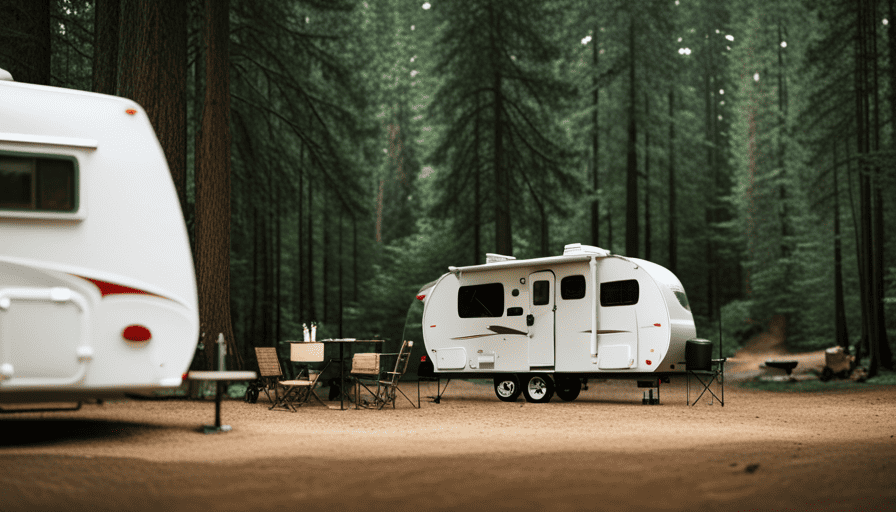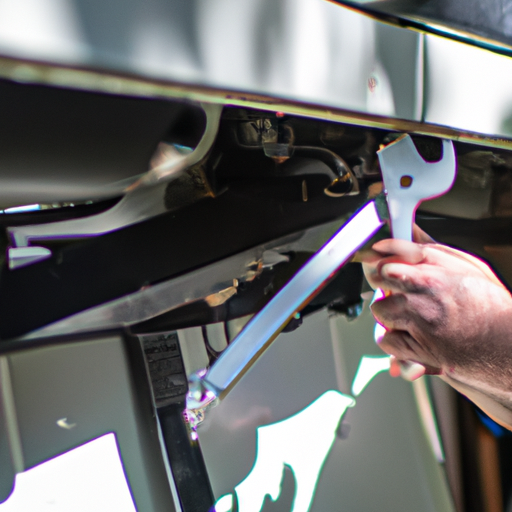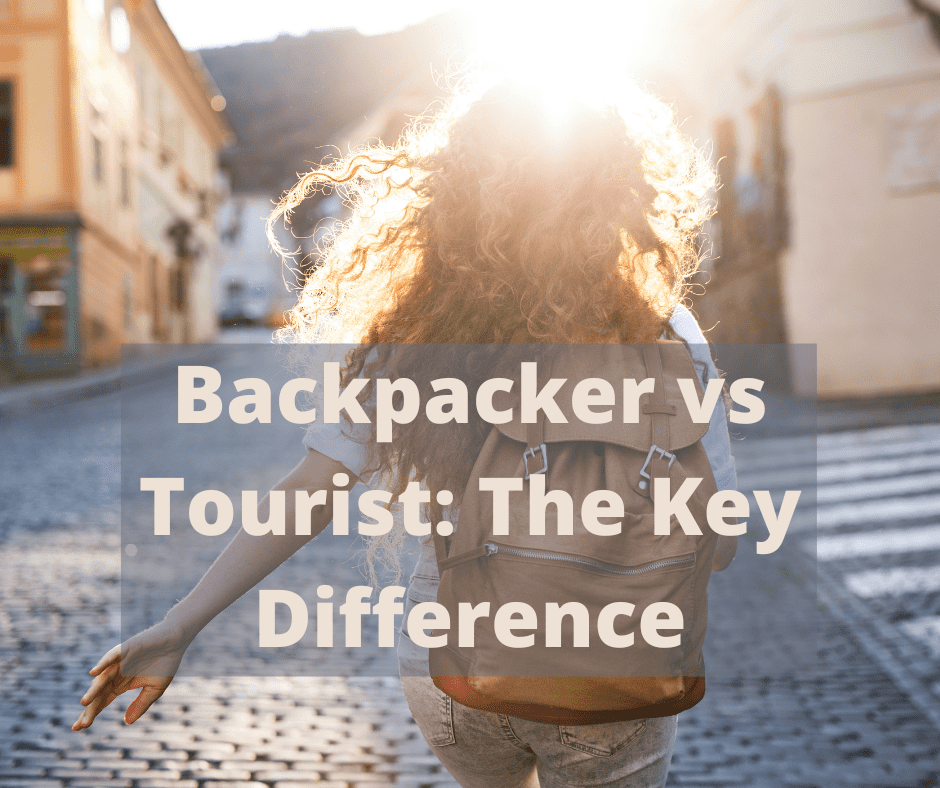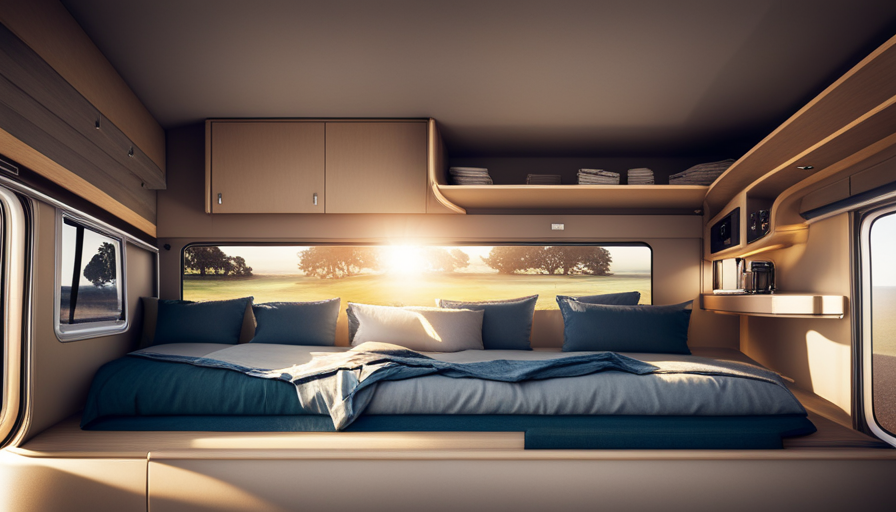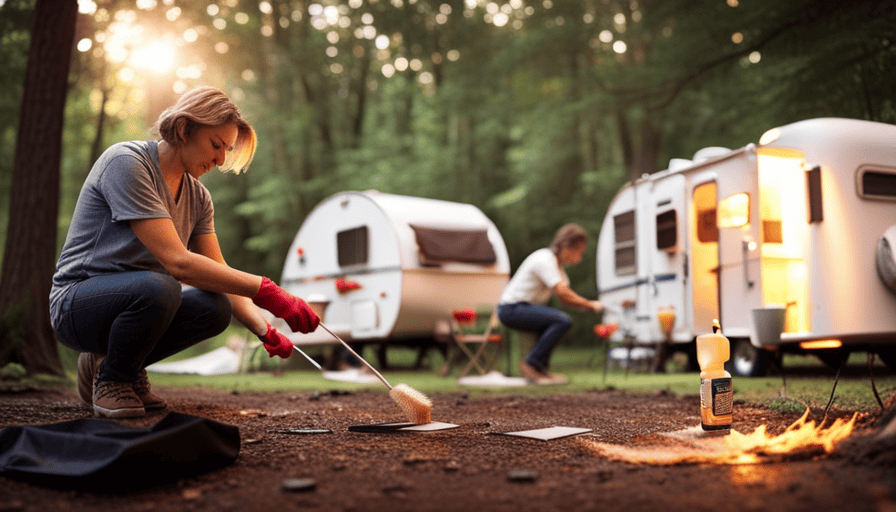Do you fantasize about a lifestyle that embraces the freedom of the open road? Imagine feeling the breeze through your hair, having the liberty to discover new destinations whenever you please, and embarking on an unparalleled adventure. If this sounds appealing to you, rest assured, you’re in good company. A growing number of individuals are choosing a nomadic way of life, with a camper trailer being their passport to this boundless freedom.
Now, you may be wondering, ‘How much are camper trailers?’ and I’m here to give you the lowdown. But first, let’s have a little fun, shall we? Picture this: you’re driving down the highway, a smile on your face, and a camper trailer in tow. People are staring in envy as you pass by, wondering just how much you paid for that luxurious home on wheels.
Well, get ready to find out, because in this article, I’m going to break down the various factors that affect camper trailer prices, the different models available, and even give you some tips on how to negotiate the best deal. So buckle up, my friend, because we’re about to embark on a journey to camper trailer heaven.
Key Takeaways
- Camper trailer prices can vary significantly depending on brand reputation, size, features, age, condition, demand, and resale value.
- Entry-level camper trailers from popular brands like Jayco and Forest River start at around $10,000 to $12,000, while luxury models can range from $30,000 to over $100,000.
- Buying new allows for customization and warranties, while buying used offers cost savings and more options. However, maintenance and insurance costs should be considered for both options.
- Financing options such as bank loans, credit unions, leasing, and manufacturer financing should be thoroughly researched and compared to find the best option based on budget, credit score, and loan terms.
Types of Camper Trailers Available
There are various types of camper trailers available to suit different camping needs and preferences. When it comes to popular camper trailer brands, there are several well-known names in the market such as Jayco, Airstream, and Forest River. Each brand offers a range of models with different features and designs.
One type of camper trailer is the pop-up camper, also known as a tent trailer. These trailers are lightweight and compact, making them easy to tow and maneuver. They’re also more affordable compared to other types of campers. However, they may lack some of the amenities and space that larger trailers offer.
Another popular type is the travel trailer, which comes in various sizes and floor plans. Travel trailers provide more living space, including separate sleeping quarters, a kitchen, and a bathroom. They offer more comfort and amenities, but they can be heavier and require a larger towing vehicle.
Motorhomes are another option, combining the vehicle and living space into one unit. They offer the convenience of being able to drive and camp in the same vehicle. However, they can be more expensive and require a different license to operate.
When considering camper trailers, it’s important to weigh the pros and cons of each type based on your camping needs and budget. Factors such as size, weight, amenities, and towing capacity should all be taken into account. These factors will affect camper trailer prices, which we’ll explore in the next section.
Factors That Affect Camper Trailer Prices
Explore the various factors that influence the prices of these incredible travel companions, and see how they can make a world of difference for your next adventure. When it comes to camper trailer prices, there are several key factors that can significantly affect the overall cost. Here are five important factors to consider:
-
Brand Reputation: Well-known brands tend to have higher prices due to their established reputation for quality and reliability.
-
Size and Features: Larger trailers with more features, such as bathrooms, kitchens, and ample storage space, generally come with a higher price tag.
-
Age and Condition: Newer models will typically be more expensive than older ones, while well-maintained used trailers can offer a more affordable option.
-
Demand: The popularity of certain models or types of camper trailers can drive up their prices due to increased demand.
-
Resale Value: Some trailers hold their value better than others, so considering the potential impact on resale value is crucial when determining the overall cost.
Understanding these factors can help you make an informed decision and find a camper trailer that suits both your needs and budget. Now, let’s delve into the world of basic camper trailer models and their prices.
Basic Camper Trailer Models and Their Prices
Let’s take a look at some of the entry-level camper trailer models and what you can expect to pay for a taste of the open road. When it comes to basic camper trailers, there are a few reputable brands that offer affordable options.
One of the best camper trailer brands for basic models is Jayco. They have a range of entry-level trailers that start at around $10,000. These models typically come with the essentials like a bed, kitchenette, and bathroom facilities.
Another popular brand for basic camper trailers is Forest River. They offer a variety of models that are perfect for those just starting out in the world of camping. Prices for their basic trailers start at around $12,000. These models are designed to be comfortable and functional without breaking the bank.
While basic camper trailers provide all the necessities, luxury models offer additional amenities and features. These models often come with upgraded interiors, larger living spaces, and more advanced technology. Prices for luxury camper trailers can range from $30,000 to over $100,000, depending on the brand and the level of customization.
Now, let’s delve into the upgrades and customizations that can increase the price even further.
Upgrades and Customizations That Can Increase the Price
Upgrading and customizing camper trailers can significantly elevate their price, offering an array of luxurious amenities and cutting-edge features to enhance your camping experience. Here are four upgrades and customizations that can increase the price of camper trailers:
-
High-end Appliances: Adding top-of-the-line kitchen appliances, such as stainless steel refrigerators, built-in microwaves, and gourmet stoves, can significantly increase the cost of a camper trailer. These appliances offer convenience and functionality while giving your camping experience a touch of luxury.
-
Solar Power Systems: Installing a solar power system allows you to generate electricity off-grid, reducing your reliance on traditional power sources. While this upgrade can be expensive, it provides a sustainable solution and allows you to camp in remote locations without sacrificing modern comforts.
-
Bathroom Upgrades: Upgrading the bathroom in your camper trailer can include adding a larger shower, a flushing toilet, and a vanity with ample storage. These upgrades provide a more comfortable and convenient experience, but they also come with a higher price tag.
-
Entertainment Systems: Adding entertainment systems, such as flat-screen TVs, surround sound speakers, and satellite receivers, can transform your camper trailer into a mobile entertainment hub. These upgrades allow you to relax and enjoy your favorite movies and shows while on the road, but they also come at an additional cost.
Comparing new vs. used camper trailers, you can weigh the benefits of these upgrades against the price difference to find the best option for your camping needs.
Comparing New vs. Used Camper Trailers
Investing in a brand new camper trailer is like stepping into a world of endless possibilities and untapped adventures. When considering whether to buy a new or used camper trailer, there are several factors to consider.
One of the main benefits of buying a new camper trailer is that everything is fresh and unused. You have the opportunity to choose the exact features and specifications that suit your needs. New trailers often come with warranties, providing peace of mind in case anything goes wrong. Additionally, you can customize the trailer to your liking, adding personal touches and upgrades.
On the other hand, buying a used camper trailer has its own set of advantages. The most obvious one is the cost savings. Used trailers are generally more affordable compared to their new counterparts. You may also find a wider variety of options available in the used market. However, it’s important to thoroughly inspect a used trailer for any signs of wear and tear, as well as potential maintenance issues.
Transitioning into the subsequent section about additional costs to consider, it’s important to weigh the pros and cons of buying new or used camper trailers, as well as the additional expenses such as maintenance and insurance.
Additional Costs to Consider (Maintenance, Insurance, etc.)
Consider the ongoing expenses such as maintenance and insurance when calculating the total cost of owning a camper trailer. While the initial purchase price is a significant factor, it’s essential to remember that there are additional costs to consider.
Here are a few things to keep in mind:
-
Maintenance Costs: Camper trailers require regular maintenance to keep them in optimal condition. This includes routine tasks such as checking and replacing tires, inspecting the electrical and plumbing systems, and servicing the brakes. Additionally, there may be unexpected repairs that need to be addressed. These maintenance costs can vary depending on the age and condition of the trailer.
-
Insurance Premiums: Just like any other vehicle, camper trailers need to be insured. The insurance premiums will depend on factors such as the value of the trailer, the coverage options chosen, and the owner’s driving history. It’s crucial to research and compare insurance providers to find the best coverage at a reasonable price.
-
Other Expenses: Don’t forget to consider other expenses such as storage fees, registration fees, and potential upgrades or modifications to personalize your camper trailer.
Understanding these additional costs will give you a more accurate picture of the total investment required for owning a camper trailer. Once you have a clear understanding of the ongoing expenses, you can explore financing options for purchasing a camper trailer.
Financing Options for Purchasing a Camper Trailer
Finding the right financing option for your dream of hitting the road in your own home-on-wheels is like navigating a winding road; there are various paths to choose from. You can consider loans from banks or credit unions, leasing options, or even exploring manufacturer financing programs.
When it comes to camper trailer financing, it’s important to consider your budget, credit score, and desired loan terms. If you have a good credit score and a stable income, obtaining a loan from a bank or credit union might be a viable option. These institutions often offer competitive interest rates and flexible repayment plans.
Leasing a camper trailer is another option worth exploring, especially if you prefer to have the flexibility of upgrading to a newer model every few years. Manufacturer financing programs are also available, allowing you to finance your camper trailer directly through the company that manufactures it.
Regardless of the financing option you choose, it’s essential to carefully review the terms and conditions. Consider factors such as interest rates, down payment requirements, and any additional fees or charges. By doing thorough research and comparing different financing options, you can find the best fit for your financial situation.
In the next section, we will explore where to find affordable camper trailers, ensuring that your dream of hitting the road becomes a reality without breaking the bank.
Where to Find Affordable Camper Trailers
Looking for a wallet-friendly way to turn your road trip dreams into a reality? Check out these amazing spots to snag budget-friendly home-on-wheels! When it comes to finding affordable camper trailers, timing is everything. The best time to purchase a camper trailer is usually during the off-season or when dealerships are trying to clear out their inventory. This is when you can find the best deals and discounts, saving you a significant amount of money.
In addition to timing, online options are a great way to find affordable camper trailers. There are numerous websites and online marketplaces where you can find both new and used campers at lower prices compared to traditional dealerships. Websites like Craigslist, eBay, and RV Trader offer a wide selection of camper trailers at various price points.
To emphasize the importance of timing and online options, here’s a table showcasing some popular websites for finding affordable camper trailers:
| Website | Description |
|---|---|
| Craigslist | Online classifieds where you can find both new and used camper trailers at lower prices. |
| eBay | An online auction and shopping website where you can bid on or buy new and used camper trailers. |
| RV Trader | A marketplace specifically for RVs and camper trailers, offering a wide selection and competitive prices. |
Now that you know where to find affordable camper trailers, let’s move on to the next section and discuss some tips for negotiating the price of a camper trailer.
Tips for Negotiating the Price of a Camper Trailer
Don’t you just love the thrill of haggling and getting a steal of a deal on that dream home-on-wheels? Well, get ready to put your negotiation skills to the test when it comes to getting the best price for your new cozy travel companion.
Here are some negotiating strategies to help you get the most bang for your buck:
-
Start by researching market prices for camper trailers. This will give you a good idea of the average cost and help you determine a reasonable price range to aim for.
-
Be prepared to walk away if the seller isn’t willing to meet your desired price. Sometimes, this can work in your favor as the seller may come back with a better offer to keep the sale.
-
Don’t be afraid to ask for extras or upgrades as part of the deal. Things like awnings, appliances, or even extended warranties can add value to your purchase without increasing the price.
By using these negotiating strategies and doing your homework on market prices, you’ll be better equipped to get the best deal on your camper trailer.
And once you’ve negotiated a price that works for you, it’s time to make a budget and plan for the purchase of your new travel companion.
Making a Budget and Planning for the Purchase
After learning some valuable tips for negotiating the price of a camper trailer, it’s time to focus on making a budget and planning for the purchase.
As someone who has gone through this process before, I can assure you that having a well-thought-out budget is crucial to avoid overspending and ensure a smooth buying experience.
One of the most effective budgeting strategies is to determine your financial limit. Start by evaluating your current financial situation and considering how much you can comfortably afford to spend on a camper trailer. Take into account factors such as your income, expenses, and any savings you may have.
Once you have set your budget, it’s essential to do thorough research on the resale value of different camper trailer models. By understanding how well certain trailers hold their value over time, you can make a more informed decision about which one to purchase. Look for models that have a good reputation for retaining their value, as this will benefit you if you decide to sell or upgrade in the future.
By incorporating these budgeting strategies and researching resale value, you will be well-prepared to make a wise and financially sound decision when purchasing a camper trailer.
Frequently Asked Questions
Are there any financing options available for purchasing a camper trailer?
Yes, there are financing options available for purchasing a camper trailer. Many dealerships and financial institutions offer loan options specifically for RV purchases. These financing options allow you to spread out the cost of the camper trailer over a set period of time, making it more affordable and manageable.
It’s important to research and compare different financing options to find the best terms and interest rates that suit your needs.
What are some tips for negotiating the price of a camper trailer?
When it comes to negotiating the price of a camper trailer, there are a few strategies that have worked well for me.
First, be prepared and do your research on the average price for similar trailers.
Second, use a simile to visually describe your desired price, like a skilled fisherman reeling in a big catch.
Third, be confident and assertive in your negotiations.
Lastly, timing is key. The best time to buy is typically towards the end of the camping season when dealers are looking to clear their inventory.
Where can I find affordable camper trailers?
I’ve found that there are several affordable camper trailer dealers that offer great options for those looking to purchase a camper trailer.
One option is to check out local dealerships or RV shows in your area, as they often have deals on new and used camper trailers.
Additionally, there are many online options for purchasing camper trailers, such as websites like RV Trader or Craigslist, where you can find a wide range of affordable options.
What are the additional costs to consider when owning a camper trailer (e.g., maintenance, insurance)?
Owning a camper trailer is like having a loyal travel companion. However, there are a few additional costs to consider.
Firstly, maintenance costs can vary depending on the size and condition of the trailer. Regular servicing, tire replacements, and repairs are essential to keep it in top shape.
Secondly, insurance coverage is crucial to protect your investment from unforeseen accidents or theft. It’s wise to research different insurance options to find the best coverage for your needs.
How do upgrades and customizations affect the price of a camper trailer?
Upgrades and customizations can significantly impact the cost of a camper trailer. When considering upgrades, such as adding solar panels or a larger water tank, expect to pay extra.
Customizations, like installing a custom interior or upgrading the kitchen appliances, can also increase the price.
It’s important to carefully consider which upgrades and customizations are necessary for your needs and budget, as they can greatly affect the overall price of a camper trailer.
What Are the Average Prices for Camper Tires?
When planning for your outdoor adventures, it’s essential to consider camper tire prices. On average, these tires can cost anywhere between $100 to $400 each, depending on factors like brand, size, and quality. However, keep in mind that prioritizing safety and durability is crucial, as it ensures a smooth and worry-free journey on the road.
Conclusion
In conclusion, camper trailers come in a wide range of prices depending on various factors such as the type, size, and features. It’s important to consider your budget and prioritize your needs before making a purchase.
While there are affordable options available, it’s also worth exploring the possibility of financing or buying used trailers. Additionally, negotiating the price and being aware of potential upgrades and customizations can help you make a more informed decision.
So, whether you’re a seasoned camper or new to the world of camping, take your time to research and plan accordingly to find the perfect camper trailer that suits your needs and budget.

